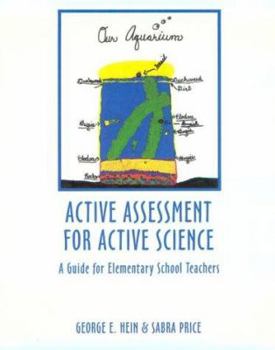Active Assessment for Active Science: A Guide for Elementary School Teachers
Although there are several new books about alternate, authentic, or performance-based assessment, few focus on science assessment and provide practical information on developing, interpreting, and scoring these new alternatives to traditional tests. In addition, many school districts around the country are adopting hands-on science programs and are looking for guidance around assessment. Active Assessment for Active Science meets the needs of teachers faced with the task of assessing hands-on science. Some new science curriculums come with assessments, but many others do not and it is unusual to find guidelines for interpreting and scoring them. This book combines practical discussion with theoretical information on the rationale for active assessments. It enables classroom teachers to develop and score their own assessments and answers the following questions: Why should you use active science assessments? What kinds of assessments are there? How do you manage these assessments in the classroom? What evidence of learning can you find in written student work? How do national curriculum developers develop assessments? How do you score them? How do assessments tie in with educational values? The book's numerous classroom examples of assessments and student work provide teachers and staff developers with materials for workshops as well as individual reflection. Teachers will gain ideas that they can immediately use in their classrooms, as well as an appreciation for the careful, methodical work that is required to develop an assessment system.
Format:Paperback
Language:English
ISBN:0435083619
ISBN13:9780435083618
Release Date:November 1994
Publisher:Heinemann Educational Books
Length:155 Pages
Weight:1.65 lbs.
Dimensions:0.4" x 7.4" x 9.3"
Grade Range:Kindergarten to Grade 5
Customer Reviews
1 rating
A Resource Worth Having
Published by Thriftbooks.com User , 18 years ago
As an environmental educator I am always looking for new ways to express ecological concepts to children, as well as find evaluative techniques to track the learning of my students. This book introduces useful self-evaluative techniques to help the student track his learning and to chart the future course of inquiry. Having been familar with George Hein(one of the book's coauthors) as one of the leading constructivist educators in non-traditional environments ( science centers, museums, nature centers, etc), I was interested in the text, and how I might apply it to the after-school enrichment program I am currently conducting. The book has given me a few new tools to use in the evaluation of the students' learning, and some ability to incorporate those techniques/results in the final analysis to the grant committee, to prove to them that their money was well spent. Admittedly, some of the techniques employed are better suited to smaller class sizes because of the time they will require to be fully reviewed and evaluated by the teacher. Nevertheless, even considering the added time component, the tools/techniques offered are worth employing because of the "buy in" the students gain in charting their learning/academic future. Though you may not find every technique applicable to your classroom situation, you may find several that help you benchmark the progress of your students more usefully than standard testing, without completely "bucking the traditional system". It's a good read, and worth the expense on an educator's budget.






